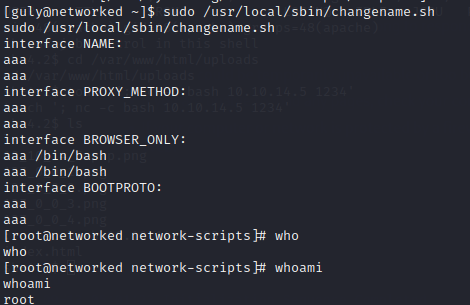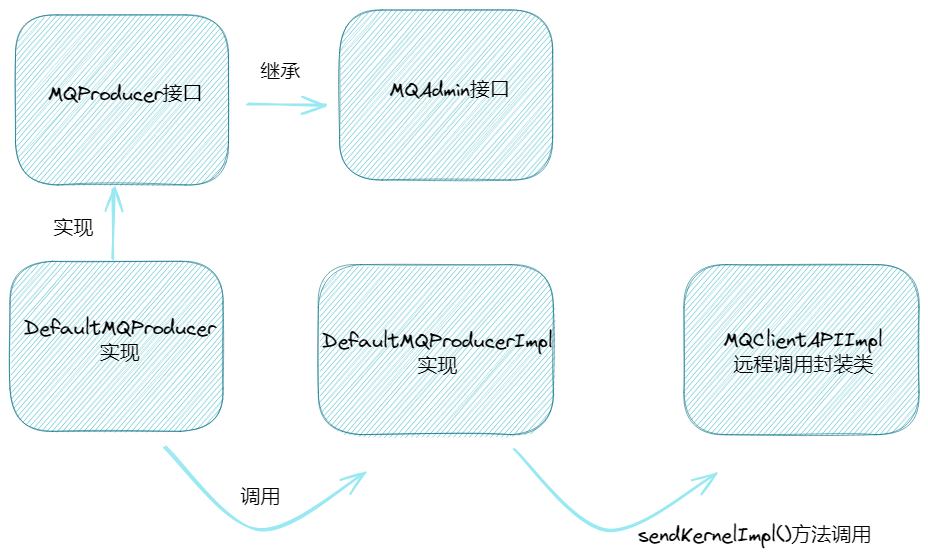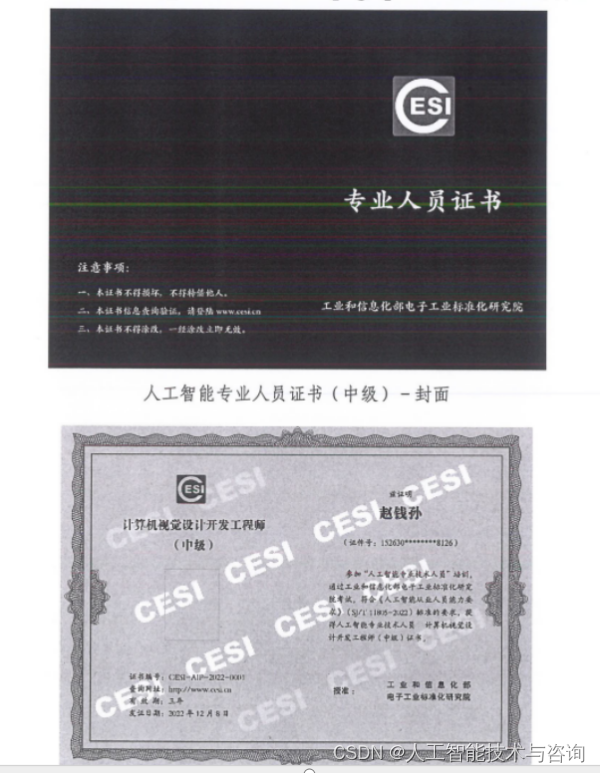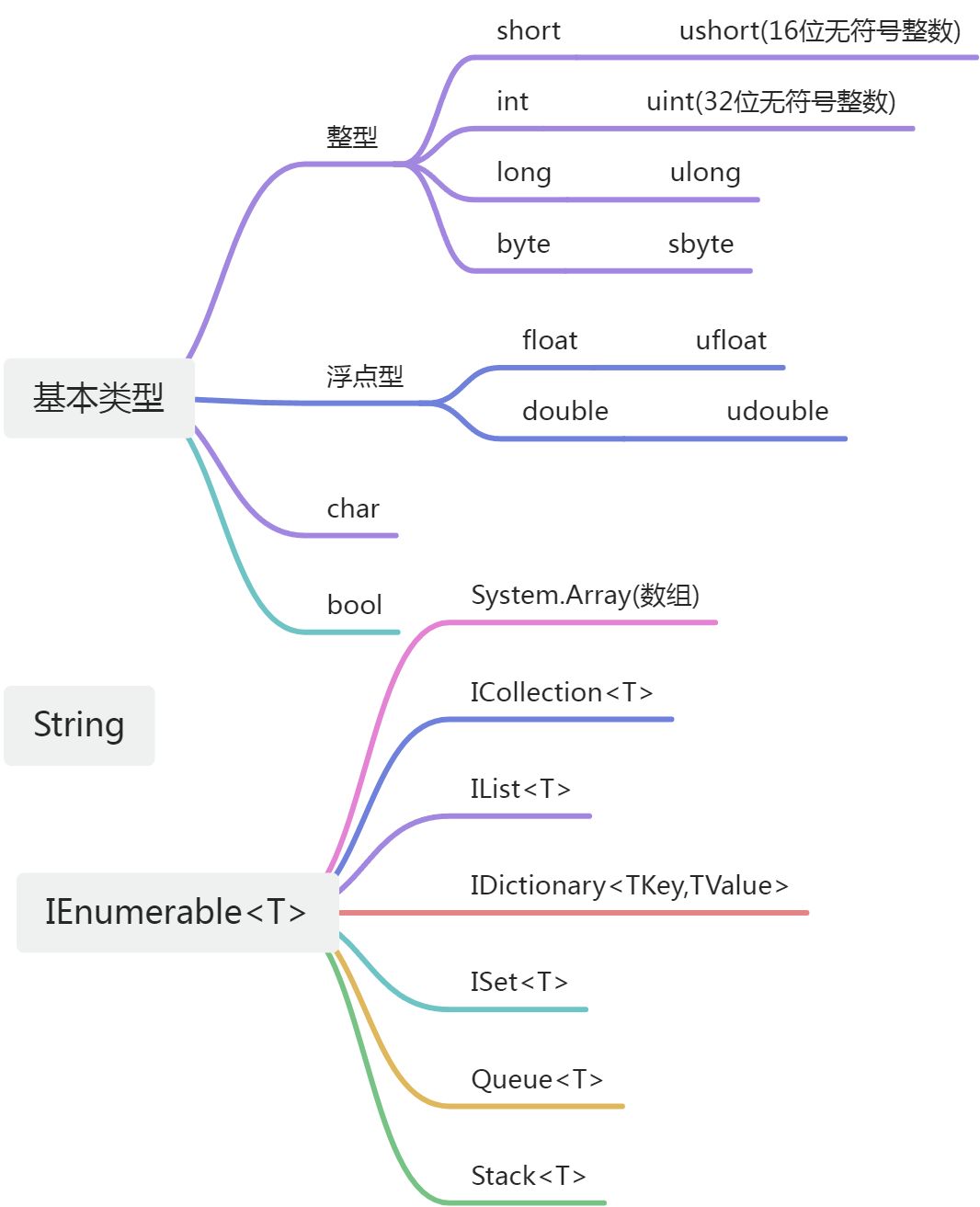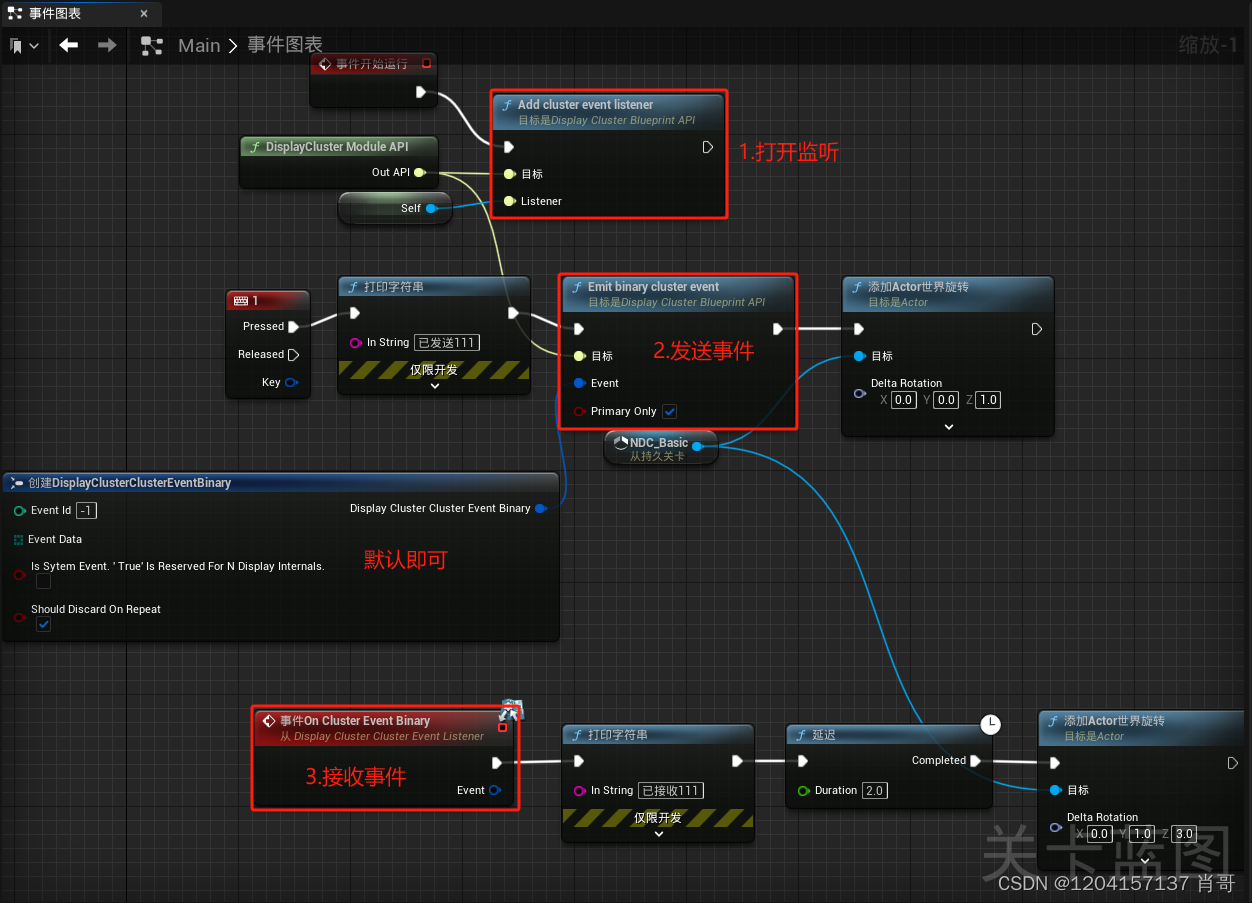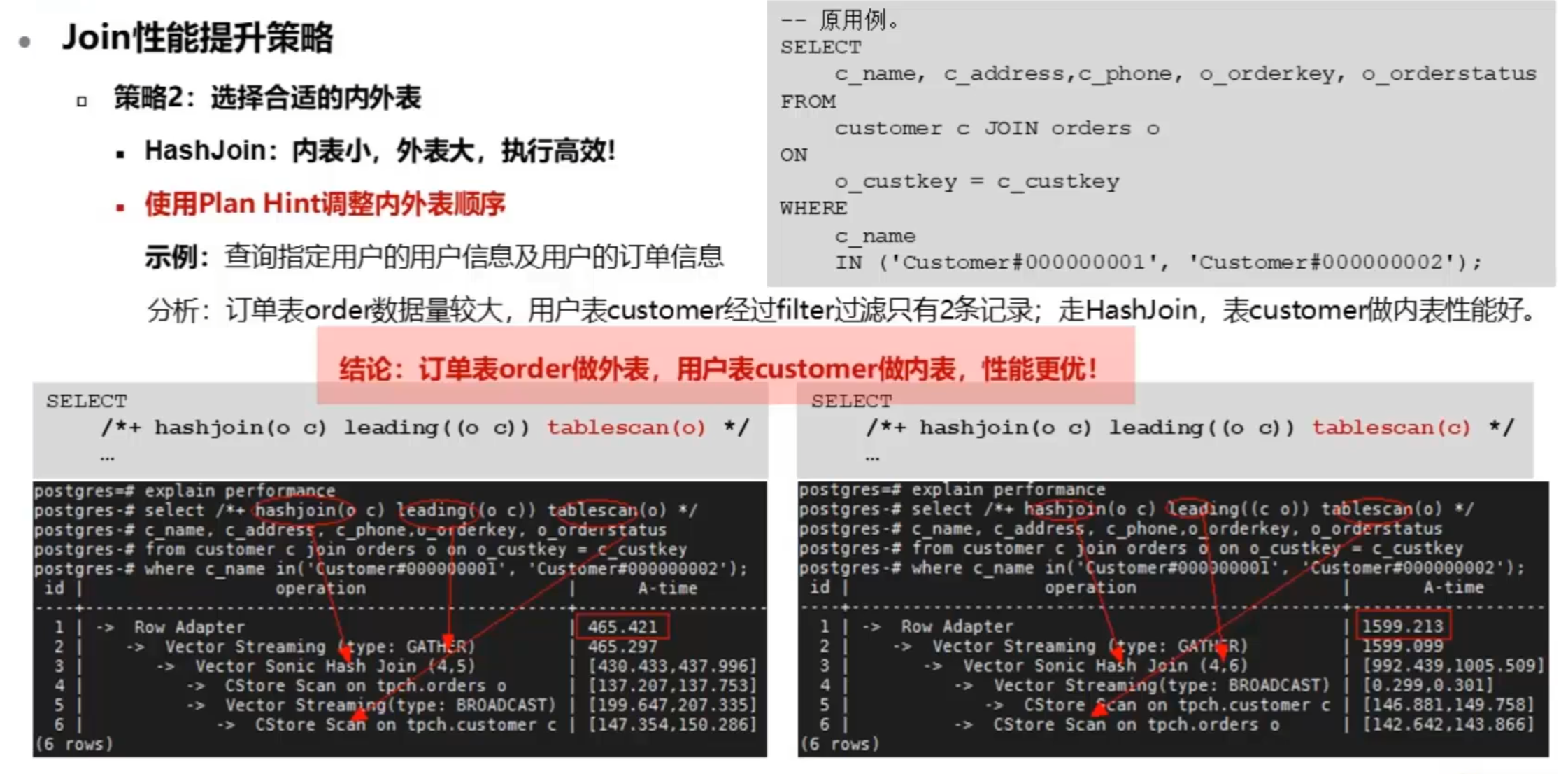1 矩阵置零
给定一个 m x n 的矩阵,如果一个元素为 0 ,则将其所在行和列的所有元素都设为 0 。请使用 原地 算法。
示例 1:
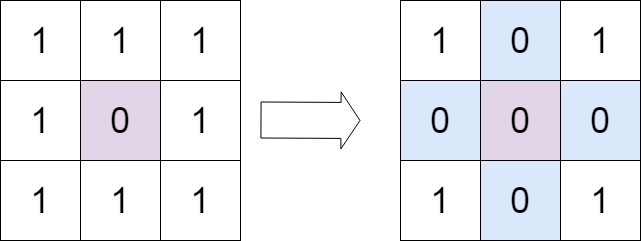
输入:matrix = [[1,1,1],[1,0,1],[1,1,1]] 输出:[[1,0,1],[0,0,0],[1,0,1]]
方法一:
使用标记数组
- 新建两个标记数组 row column
- 第一次遍历数组 记录数组中每一行 每一列 中的值是否为0
- 第二次遍历数组 将数组中0所在的行和列设置为0
class Solution {
public void setZeroes(int[][] matrix) {
int m = matrix.length;
int n = matrix[0].length;
// 新建两个数组 记录二维数组的每一行和每一列是否为零
boolean[] row = new boolean[m];
boolean[] column = new boolean[n];
// 第一次遍历二维数组 标记他的每一行 每一列是否为0
for(int i = 0; i < m; i++){
for(int j = 0; j < n; j++){
if(matrix[i][j] == 0){
row[i] = column[j] = true;
}
}
}
// 第二次遍历数组 将0所在的行和列设置为0
for(int i = 0; i < m; i++){
for(int j = 0; j < n; j++){
if(row[i] == true || column[j] == true){
matrix[i][j] = 0;
}
}
}
}
}2 螺旋矩阵
给你一个 m 行 n 列的矩阵 matrix ,请按照 顺时针螺旋顺序 ,返回矩阵中的所有元素。
示例 1:

输入:matrix = [[1,2,3],[4,5,6],[7,8,9]] 输出:[1,2,3,6,9,8,7,4,5]
方法:
按层模拟,首先输出最外层的元素,其次输出次外层的元素,直到输出最内层的元素
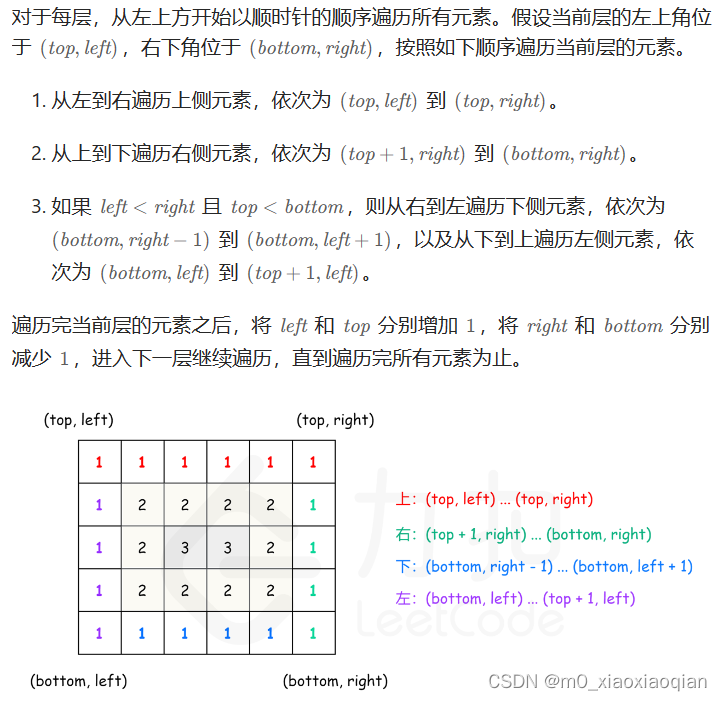
class Solution {
public List<Integer> spiralOrder(int[][] matrix) {
List<Integer> order = new ArrayList<>();
// 数组判空
if(matrix == null || matrix.length == 0 || matrix[0].length == 0){
return order;
}
int row = matrix.length;
int column = matrix[0].length;
int left = 0;
int right = column - 1;
int top = 0;
int bottom = row - 1;
// 螺旋矩阵循环入口
while(left <= right && top <= bottom){
// 从左到右遍历上侧元素
for(int colu = left; colu <= right; colu++){
order.add(matrix[top][colu]);
}
// 从上到下遍历右侧元素
for(int row1 = top +1; row1 <= bottom; row1++){
order.add(matrix[row1][right]);
}
if(left < right && top < bottom){
// 从右到左遍历下侧元素
for(int colu = right -1; colu > left; colu--){
order.add(matrix[bottom][colu]);
}
// 从下到上遍历左侧元素
for(int row2 = bottom; row2 > top; row2--){
order.add(matrix[row2][left]);
}
}
left++;
right--;
top++;
bottom--;
}
return order;
}
}3 旋转图像
给定一个 n × n 的二维矩阵 matrix 表示一个图像。请你将图像顺时针旋转 90 度。
你必须在 原地 旋转图像,这意味着你需要直接修改输入的二维矩阵。请不要 使用另一个矩阵来旋转图像。
示例 1:
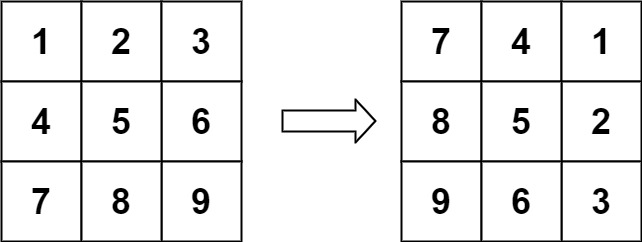
输入:matrix = [[1,2,3],[4,5,6],[7,8,9]] 输出:[[7,4,1],[8,5,2],[9,6,3]]
方法一:
借助辅助数组
原数组中第i行第j个元素 旋转后再数组中的位置变为 倒数第i列第j个位置
数组下标从0开始
[row][col] 旋转后 —> [col][n-row-1]
- 第一次遍历数组,将数组旋转之后的值存储在辅助数组中
- 第二次遍历数组,将辅助数组中的值赋值给原数组
class Solution {
public void rotate(int[][] matrix) {
// 获取数组的长度 n*n
int n = matrix.length;
// 新建辅助数组
int[][] newMatrix = new int[n][n];
// 第一次遍历数组 将旋转后的值存储在辅助数组中
for(int row = 0; row < n; row++){
for(int col = 0; col < n; col++){
newMatrix[col][n - row - 1] = matrix[row][col];
}
}
// 第二次遍历数组,将辅助数组中的值赋值给原数组
for(int i = 0; i < n; i++){
for(int j = 0; j < n; j++){
matrix[i][j] = newMatrix[i][j];
}
}
}
}方法二:
原地旋转矩阵
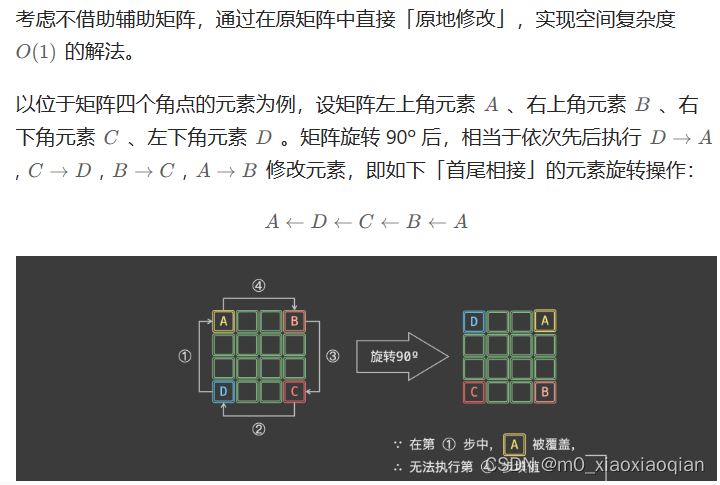
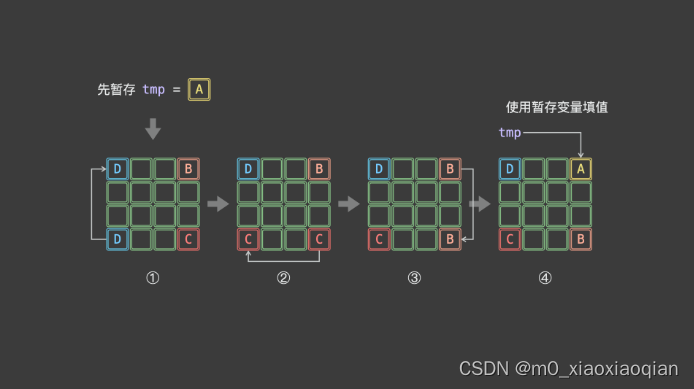
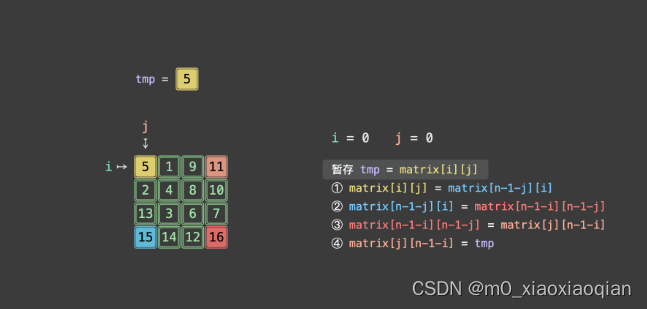
一轮可以完成矩阵的四个元素的旋转
故:只要分别以矩阵左上角1/4的铬元素为其实点执行以上操作,即可完成矩阵旋转
- 当n为偶数时,取前n/2行,n/2列的元素为起点
- 当n为奇数时,取前n/2行,(n+1)/ 2列的元素为起点
class Solution {
public void rotate(int[][] matrix) {
// 原地旋转矩阵
// 获取数组长度
int n = matrix.length;
// 旋转数组 一轮可以完成矩阵中四个元素的交换
for(int i = 0; i < n/2; i++){
for(int j = 0; j < (n+1)/2; j++){
int temp = matrix[i][j];
matrix[i][j] = matrix[n-j-1][i];
matrix[n-j-1][i] = matrix[n-i-1][n-j-1];
matrix[n-i-1][n-j-1] = matrix[j][n-i-1];
matrix[j][n-i-1] = temp;
}
}
}
}



